Ningbo
| Ningbo 宁波 Níngbō Shì |
|
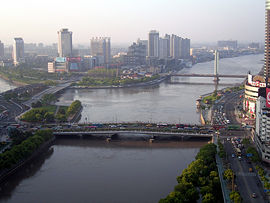 |
|
| Nickname(s): 甬 yǒng | |
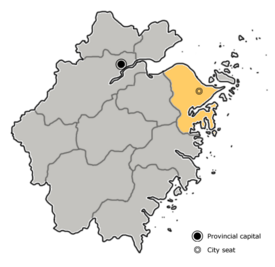 |
|
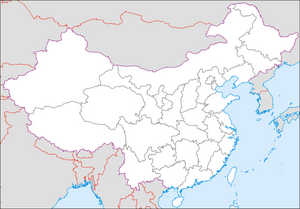 Ningbo
|
|
| Coordinates: | |
| Country | China |
|---|---|
| Province | Zhejiang |
| County-level divisions | 11 |
| Township divisions | 148 |
| Government | |
| - CPC Ningbo Committee Secretary | Bayin Chaolu (巴音朝鲁) |
| - Mayor | Mao Guanglie (毛光烈) |
| Area | |
| - Sub-provincial city | 9,365 km² (3,615.8 sq mi) |
| Elevation | 150 m (488 ft) |
| Population (2007) | |
| - Sub-provincial city | 5,646,000 |
| - Density | 602.9/km² (1,561.5/sq mi) |
| - Urban | 2,182,000 |
| Time zone | China Standard Time (UTC+8) |
| Postal code | 315000 |
| Area code(s) | 574 |
| License plate prefixes | 浙B |
| GDP (2007) | CNY 343.3 billion |
| - per capita | CNY 61,032 |
|
Camphor Laurel Cinnamomum camphora (L.) Sieb.) Camelia |
|
| Website: www.ningbo.gov.cn (Chinese) | |
Ningbo (simplified Chinese: 宁波; traditional Chinese: 寧波; pinyin: Níngbō; Wade-Giles: Ning-po; literally "Tranquil Waves") is a seaport with sub-provincial administrative status. The city has a population of 2,182,000 and is situated in northeastern Zhejiang province, China. Lying south of the Hangzhou Bay, and facing the East China Sea to the east, Ningbo borders Shaoxing to the west and Taizhou to the south, and is separated from Zhoushan by a narrow body of water.
Contents |
Etymology
Níng (宁) - Serene; bō (波) - Waves; Together - Serene Waves. The city is abbreviated Yong (甬). The abbreviation Ning is used for Nanjing.
History
Ningbo was one of China's oldest cities with a history dating back to 4800 B.C. the Hemudu culture. Ningbo was known as a trade city on the silk road at least 2000 years ago, and then as a major port along with Yangzhou and Guangzhou in the Tang Dynasty; thereafter, the major ports for foreign trade in the Song Dynasty. Ningbo was one of the five Chinese treaty ports opened by the Treaty of Nanjing (signed in 1842) at the end of the First Opium War between Britain and China. During the war, British forces took possession of the walled city of Ningbo briefly after storming the fortified town of Zhenhai at the mouth of the Yong River on October 10, 1841. In 1864 the forces of the Taiping Rebellion held the town for six months. In March 1885, during the Sino-French War, Admiral Courbet's naval squadron blockaded several Chinese warships in Zhenhai Bay and exchanged fire with the shore defences.
Ningbo was once famed for traditional Chinese furniture production.
During World War II in 1940, Japan bombed Ningbo with fleas carrying the bubonic plague.[1] According to Daniel Barenblatt, Prince Tsuneyoshi Takeda received, with Prince Mikasa, a special screening by Shiro Ishii of a film showing imperial planes loading germ bombs for bubonic dessemination over Ningbo in 1940. [2]
"It has been said of the Ningbo fishermen that, 'no people in the world apparently made so great an advance in the art of fishing; and for centuries past no people have made so little further progress.' "[3]
Administrative Structure
Ningbo currently has a party secretary of Mongol background, Bayunchoru, serving as first-in-charge of the city.
There are 5 county-level satellite cities under Ningbo's jurisdiction, namely:
- Yuyao
- Cixi
- Fenghua
- Ninghai
- Xiangshan
Geography and climate
- Ningbo covers an area of 9,365 square kilometres (3,616 sq mi) and has a total coastline of 1,562 km (971 mi) including 788 km (490 mi) of mainland coastline and 774 km (481 mi) of island coastline.
- Climatic Features: sub-tropical monsoon climate featured with temperate and humid weather and four distinct seasons; frost-free of 230-240 days
- Average Temperature: 16.2 °C (61.2 °F); average high in summer is 32 °C (90 °F), in winter 9 °C (48 °F)
- Average Rainfall: 1,300 mm (51 in) – 1,400 mm (55 in)
Economy
Ningbo is a very important economic hub and port city. A port city for foreign trade since the 7th century, Ningbo has since become a major exporter of consumer products, electrical products, textiles, food, and industrial tools.
In 2007, Ningbo's economic activity reached USD 56.5 billion, up 33.9% from 2006. The exports totalled USD 38.26 billion, up 33% from the previous year. In addition, Ningbo imported USD 18.24 billion of goods, up 35.7% from the previous year.
Ningbo's economy grew 14.8 percent in 2007 to 343.3 billion yuan (US$45 billion). The city's per capita output was $8,026, more than three times the national average and very competitive to Shanghai's $8,949.[4]
Tourism
- Tianyi Pavilion Museum, (Tian Yi Ge Bowuguan) Ningbo's best tourist attraction, the Tianyige Library (daily 8am-4.30pm; ¥12), is comfortably tucked away in the vicinity of Moon Lake (Yuehu). Built in 1516 and said to be the oldest surviving library building in China, it was founded by Ming official Fan Qin, whose collection went back to the eleventh century and included woodblock and handwritten copies of the Confucian classics, rare local histories and lists of the candidates successful in imperial examinations. Nowadays you can visit the library's garden and outhouses, some of which contain small displays of old books and tablets. It's quite a charming place and the gold-plated, wood-paneled buildings, their bamboo groves, pool and rockery still preserve an atmosphere of seclusion, contemplation and study.
- Baoguo Temple, the oldest intact wooden structure in Southern China, is located in Jiangbei District, 15km north of Ningbo city.
- Tianfeng Tower
- Ahyuwang Temple
- Tiantong Temple
- Tian Yi Square
- Zhoushan Islands
- Yushan Islands
Notable people

Many well known Chinese came from Ningbo or their ancestral home was Ningbo.
People in main land China
- Pan Tianshou (潘天寿), artist in Chinese painting.
- Zhou Xinfang (周信芳), artist in Peking Opera.
- Sha Menghai (沙孟海), the Master Calligrapher.
People in Hong Kong
- Sir Run Run Shaw
- Tung Chee Hwa
- Tung Chao Yung
- Chen Din Hwa
- Stephen Chow
People in Taiwan
- Chiang Kai-shek (蔣介石), KMT leader and military strongman.
- Chiang Ching-kuo (蔣經國)
- Morris Chang (張忠謀)
People overseas
- Shien Biau Woo
- Yo Yo Ma
Transportation

The Hangzhou Bay Bridge, a combination cable-stayed bridge and causeway across Hangzhou Bay opened to public on 1 May 2008, connects the municipalities of Shanghai and Ningbo, and is considered the longest trans-oceanic bridge in the world, and the world’s second-longest bridge, after the Lake Ponchartrain Causeway in Louisiana, USA.
The port of Ningbo is one of the world's busiest ports, ranked 4th by cargo tonnage in 2005, and 15th in TEU.
Ningbo Lishe International Airport connects Ningbo by air to the rest of China, with regularly scheduled flights to China and international destinations.
Military
Ningbo is the headquarters of the East Sea Fleet of the Chinese People's Liberation Army Navy. Its sector of responsibility includes Taiwan.
Food
Ningbo is known for Ningbo Tang Bao, small stuffed buns which are steamed. The stuffing is usually ground pork mixed with minced vegetables. They are usually eaten with care as the tang (broth) inside the buns can be very hot.
Universities and colleges
Ningbo has three universities. Towards the north of the city is Ningbo University, while the Ningbo Higher Education Zone (Yinzhou district) is home to Zhejiang Wanli University as well as the University of Nottingham Ningbo, China – a joint venture between the University of Nottingham and the Wanli Education Group.
Sister cities
Ningbo has city partnerships with many cities around the world.
Sister cities (友好城市)
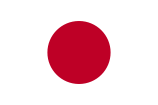 Nagaokakyo, Japan (since April 1983)
Nagaokakyo, Japan (since April 1983) Aachen, Germany (October 1986)
Aachen, Germany (October 1986)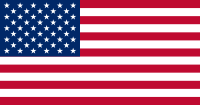 Wilmington, USA (May 1988)
Wilmington, USA (May 1988) Rouen, France (March 1990)
Rouen, France (March 1990) Waitakere, New Zealand (November 1998)
Waitakere, New Zealand (November 1998)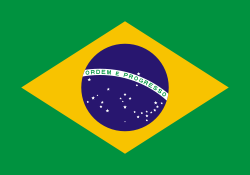 Santos, Brazil (January 2002)
Santos, Brazil (January 2002) Veszprem, Hungary (July 2003)
Veszprem, Hungary (July 2003) Nelson Mandela Municipality, South Africa (September 2003)
Nelson Mandela Municipality, South Africa (September 2003) Varna, Bulgaria (June 2004)
Varna, Bulgaria (June 2004) Stavanger, Norway (September 2004)
Stavanger, Norway (September 2004)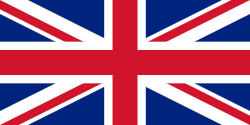 Nottingham, UK (September 2005)[5]
Nottingham, UK (September 2005)[5] Bydgoszcz, Poland (November 2005)
Bydgoszcz, Poland (November 2005)
Cities of friendly exchanges (友好交流关系城市)
 Masuda, Japan (since October 1990)
Masuda, Japan (since October 1990) Ueda, Japan (February 1995)
Ueda, Japan (February 1995)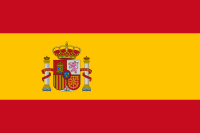 Barcelona, Spain (October 1995)
Barcelona, Spain (October 1995) Suncheon, South Korea (June 1997)
Suncheon, South Korea (June 1997) Surrey, Canada (May 1999)
Surrey, Canada (May 1999) Houston, USA (September 2000)
Houston, USA (September 2000) Wiener Neustadt, Austria (September 2000)
Wiener Neustadt, Austria (September 2000) Daegu, South Korea (September 2000)
Daegu, South Korea (September 2000) Aguascalientes, México (November 2006)
Aguascalientes, México (November 2006) Milwaukee, WI, USA (2006)[6]
Milwaukee, WI, USA (2006)[6]
See also
- Jiangnan
- Ningbo People
- Ningbo Twin Towers
References
- ↑ Japan triggered bubonic plague outbreak, doctor claims, [1], Scaruffi, Piero (1999). "A time-line of World War II". Retrieved on 2008-05-02.
- ↑ Daniel Barenblatt, A Plague upon Humanity, 2004, p.32.
- ↑ Worchester, G R G (1971). The Junks and Sampans of the Yangtze. Annapolis, MD: Naval Institute Press. pp. 174. ISBN 9780870213359. OCLC 216526.
- ↑ Chiang, Langi (2007-07-09). "Bridge to Shanghai should give Ningbo's economy a lift", International Herald Tribune (Paris), The New York Times Company. Retrieved on 2008-05-02.
- ↑ "International Partner Cities". Nottingham City Council. Retrieved on 2008-05-02.
- ↑ JS Online: New statues are today's mane event
External links
- Ningbo Government website
- Ningbo travel guide from Wikitravel
|
||||||||||||||||||
|
||||||||||||||||||||||||
|
|
|||||||
|---|---|---|---|---|---|---|---|
|
|||||||
